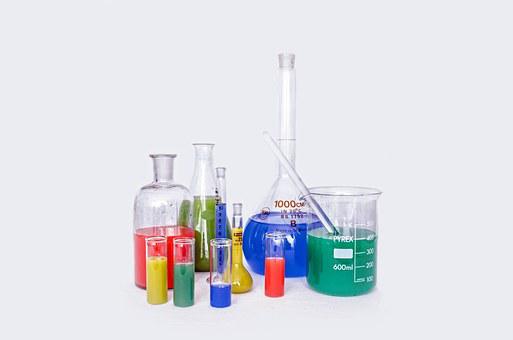Table of Contents
Solubility Test
Fiber identification is a difficult task but if we know the characteristics of that fiber then it is easy to identify the fiber. Another thing is that, if anyone wants to know the name of an unknown fiber then what can we do? The simple answer is that we can carry out various types of fiber identification tests. Textile fiber can be identified by physical tests, chemical tests, burning tests, density tests, and many more tests.

Here, I like to give a chemical test procedure which is a solubility test. It is a common testing procedure for all types of fiber. I think it will help to identify fiber.
The procedure of Solubility Test for Fiber Identification
The methods of solubility test for fiber identification give a better idea about the solubility ability of the fiber. Hence, different textile fiber has their own standard for measuring fiber solubility. So, the test of fiber solubility gives accurate ideas about the solubility of that’s fiber. The followings are the solubility testing procedure for fiber identification. They are-
- Firstly, if we want to carry out the test, we have to maintain the room temperature and place a small sample of the fiber in a watch crystal, test tube, or 50 ml beaker and cover it with the test solvent. Here, 1 ml of solvent is necessary for 10 ml of fiber.
- Secondly, if the test performs at the boiling point of the solvent then first bring the solvent to a beaker for boiling on an electric hot plate in a vertical hood.
- Thirdly, the hot plate temperature adjusts to maintain slow boiling and keep watch so that the solvent does not boil dry. Then the fiber sample drops into the boiling solvent.
- After that, if the test carries at some intermediate temperature then a beaker of water is heated on a hot plate. Therefore, adjusts the temperature with a thermometer.
- Then, place the fiber sample in the test solvent in a test tube. After that, immerse it in the heated water bath.
- If the fiber dissolves completely then softens to a plastic mass or remains insoluble.
- Finally, compare the observation data to the standard data to identify the fiber by the solubility test.
Equipment for Test
Different technical equipment is used for performing solubility tests. The followings are the most commonly used equipment for solubility tests. They are-
- Water Bath: 37ºC ± 1ºC
- Glass Tubes with Caps (5 mL)
- Laboratory Balance
- Pipetting Aid
- Pipettes, pipettors
- Waterbath Sonicator
- Dry Heat Block
Solvents of Different Fiber
The following table shows the different solvents for identifying textile fibers in the solvent test. They are-
| Serial Number | Fiber | Solvents Chemicals |
| 01. | Wool and Silk | Sodium hypochlorite (5% chlorine, 25°C) |
| 02. | Silk | Cold 70% Sulphuric acid |
| 03. | Cellulosic Fiber | 75% Sulphuric acid (at 25°C) |
| 04. | Viscose | Sodium zincate (cotton insoluble) |
| 05. | Acetate, Triacetate | Glacial acetic acid (at 25°C) |
| 06. | Acetate, Triacetate | Cold acetone |
| 07. | Triacetate (acetate insoluble) | Methylene chloride (at 25°C) |
| 08. | Nylon 6, Nylon 6:6 | Hydrochloric acid (1:1Xat 25°C) |
| 09. | Nylon 6, Nylon 6:6 | Formic acid (at 25°C) |
| 10. | Acrylic | DMF cold |
| 11. | Nylon 6 | DMF at a boil (Nylon 6:6 insoluble) |
| 12. | Acrylic | Ammonium thiocyanate (70% solution at a boil) |
| 13. | Polyester | Meta cresol, 95°C |
| 14. | Polyester | Chloro-phenol (at a boil) |
| 15. | Polypropylene | Meta xylene (at a boil) |
So, that’s all about the procedure of solubility test for fiber identification. It is a common testing process. I will discuss the solubility test procedure for individual fiber in my next blog.







3 comments
agabus
FIBRE IDENDIFICATION
Ayaz
I need method to check blend ratio of cotton:modal, cotton:Viscose, cotton:tencel , cotton: banboo with chemical testing.
nashane
i like this website